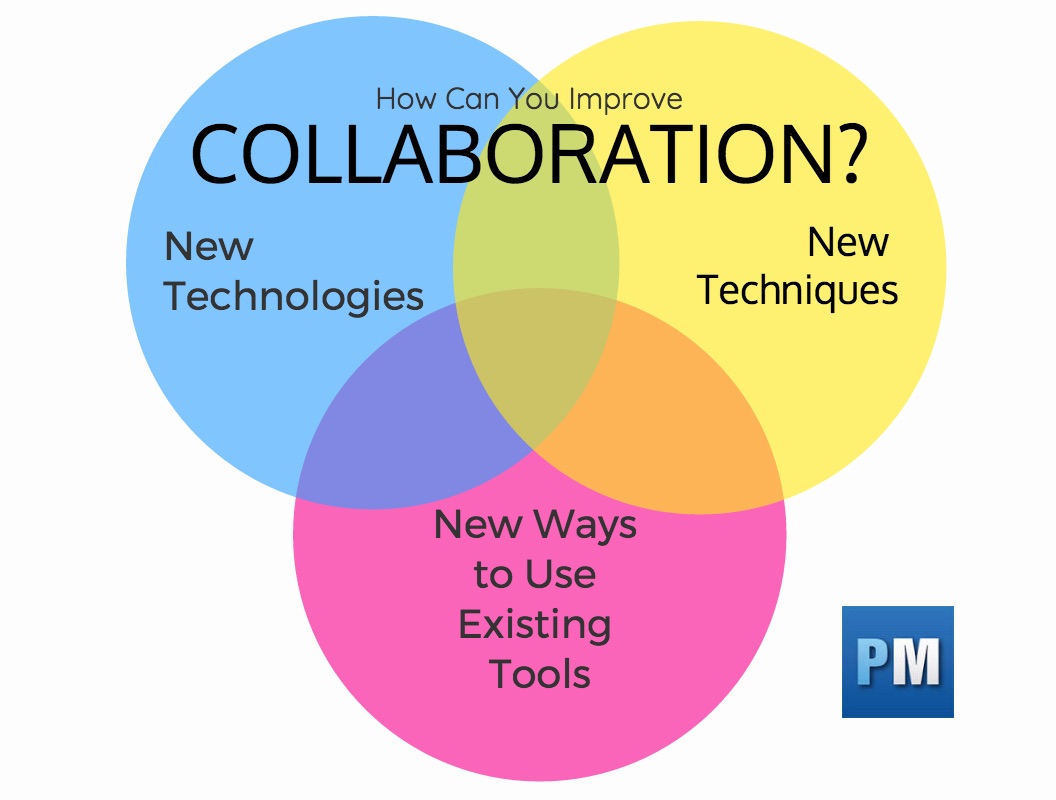Collaboration is just the trendy way of speaking about teamwork. Completing a project on time and within budget is obviously a team effort. So, what are you doing to foster your team to work together more efficiently and productively?
First and foremost, you need to create an environment that is fertile to allow collaboration to grow. If there isn’t a culture that permits and encourages collaboration then getting teams to work better together is going to be that much harder. To help inspire your team to work together, check out this list of the 25 best quotes about teamwork.
Also, the right project management software tools are going to help facilitate that process. Whether those are the tried and true techniques or a new technology, experimenting with new ways to collaborate with your team helps energize and improve productivity.

Virtual Reality
The stuff of sci-fi books and movies has taken a big step into everyday world with products by Sony’s Morpheus headset for PlayStation 4, Valve/HTC’s Vive headset, Samsung and the Facebook-owned Oculus Rift. But virtual reality is not just for fun and gaming.
Doghead Simulations is a virtual reality software made for remote teams. The company offers an alternative to company calls, sharing desktops and dialoguing over instant message programs. They claim it’s more effective to be in the same room, but if you physically can’t then virtually sharing a space is the next best option.
You save travel expenses and gain real-time visibility. “Our solutions will help you optimize your entire business team, from Agile planning, Sprint development, project management and scheduling,” says its website.
Another company offering a virtual solution to getting remote teams to collaborate is VRS. Here you can interact, change or amend data within its virtual environment, as opposed to the more traditional, linear way information is passed from one person to another. VRS offers either a completely virtual environment or a hybrid where virtual and the real world mix.
A Seattle-based startup called Visual Vocal is also working on a virtual reality collaboration solution. It is developing a technology that converts 3D renderings into virtual reality that can be shared via the cloud. It’s a way to get feedback, but there is an opportunity inherent in the software to clear communication hurdles that are put up by distances between teams.
This is a new technology and there are sure to be some bugs that need working out, not to mention the human hurtle of working in such an alien landscape. But as the technology improves and people become acclimated with virtual reality, expect to see more of this type of collaboration.
New Techniques
These new and innovative ways of collaborating are not merely new toys to play with. There has been a real boost in productivity by experimenting with new collaborative tools. According to a report by McKinsey & Company, “process and networking tools improve productivity by 20 to 30 percent for global software development teams.”
The study found that productivity was helped by the creation of a social networking site to bring team members together and improve their visibility, a remote startup kit defined roles, responsibilities and best practices to foster better interactions, a blog and photo sharing platform to exchange ideas and a RSS/Wiki-based product-specification process to keep product managers and technical folks linked.
There is also a teaching strategy called Fishbowl, which is a method of teaching a variety of social skills to either move a discussion forward or shut it down. First you outline your goals, then the entire team discusses that goal. Next, give the team a thought-provoking problem or question to work through privately.
Then you take what is called a “field trip,” which essential is visiting one of the teams and seeing how they resolved the problem or answered the question. The purpose is to model better participation and productive discussions. As teams become more adept in this process, their collaboration will improve.
If you can either think up or research new techniques such as the two outlined above, then your team is given more tools with which to collaborate. Some will work better than others, but the more avenues available to them the better they’ll be able to deliver on the goals of whatever project they’re involved in.
Use Existing Tools in New Ways
You probably have project management software, but you’ve likely been using it the same old way. It’s easy to get stuck in a rut and proceed through a project by rote, but it’s not helpful. It certain won’t excite your team to collaborate in new ways.
But if you take those existing tools that you’re so comfortable with and look at them from a different angle, maybe there’s a way to use them that will stir things up and reinvigorate your team.
Take for example the boring workhorse of the Gantt chart. When you’re Gantt chart is part of an online project management software you can easily share it. Team members can not only update their status, but add photos, videos, notes and documents as attachments for task-level collaboration among team members.
You can also mix up the way you work. If you’re constantly messaging team members and filling their in-boxes with email notifications, maybe take a break and use group chats so that team members can communicate while working instead of having to break away to check their email. Do it for a week and note the results.
ProjectManager.com is a cloud-based project management software that allows for a great variety of collaboration. From real-time status updates and group chat features to interactive Gantt charts and easy report generation from its dashboard, the project manager and team member will find many ways to work together more efficiently and productively. See why it is ranked #1 in project management by Gartner’s GetApp by taking this free 30-day trial now.

